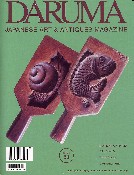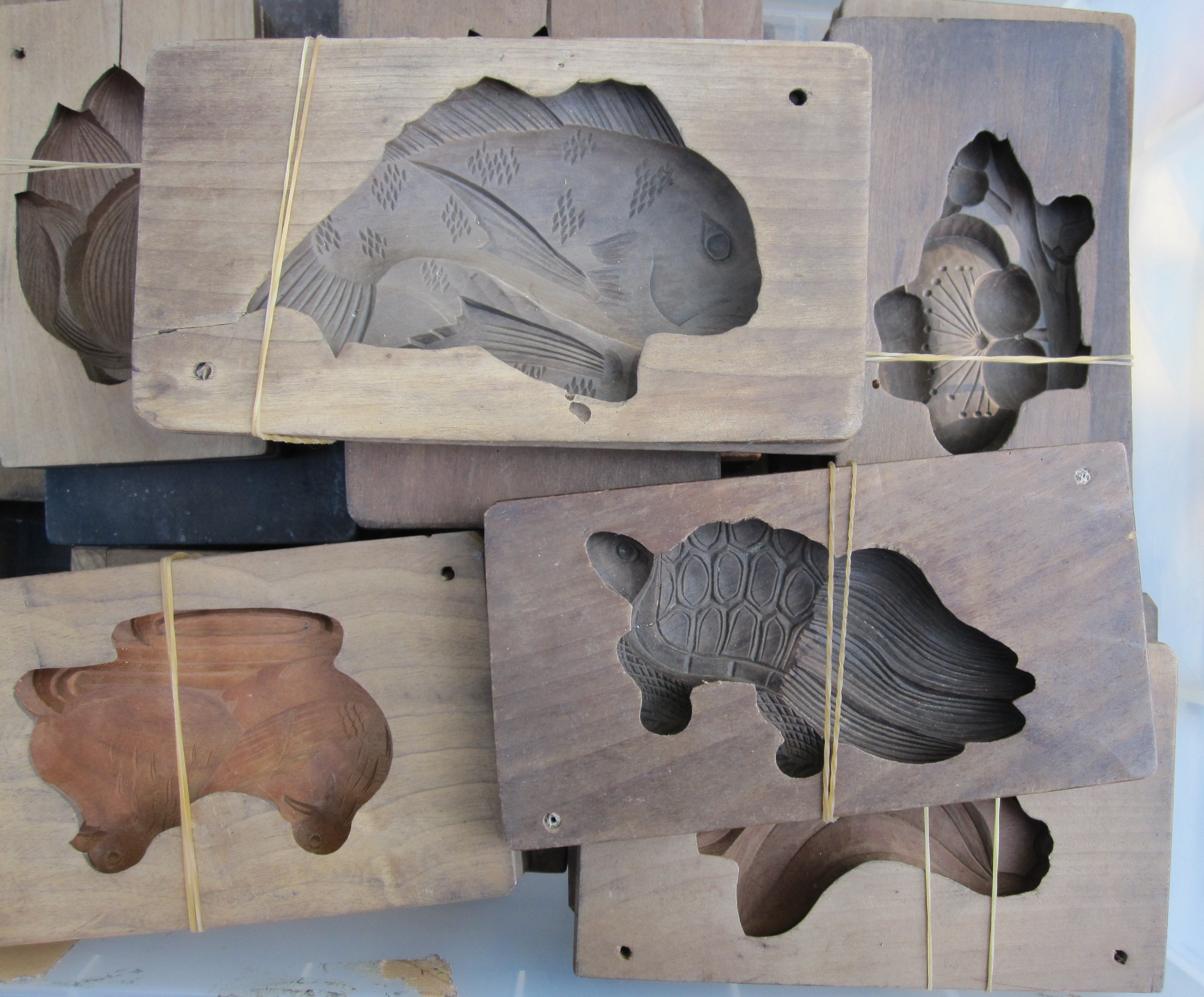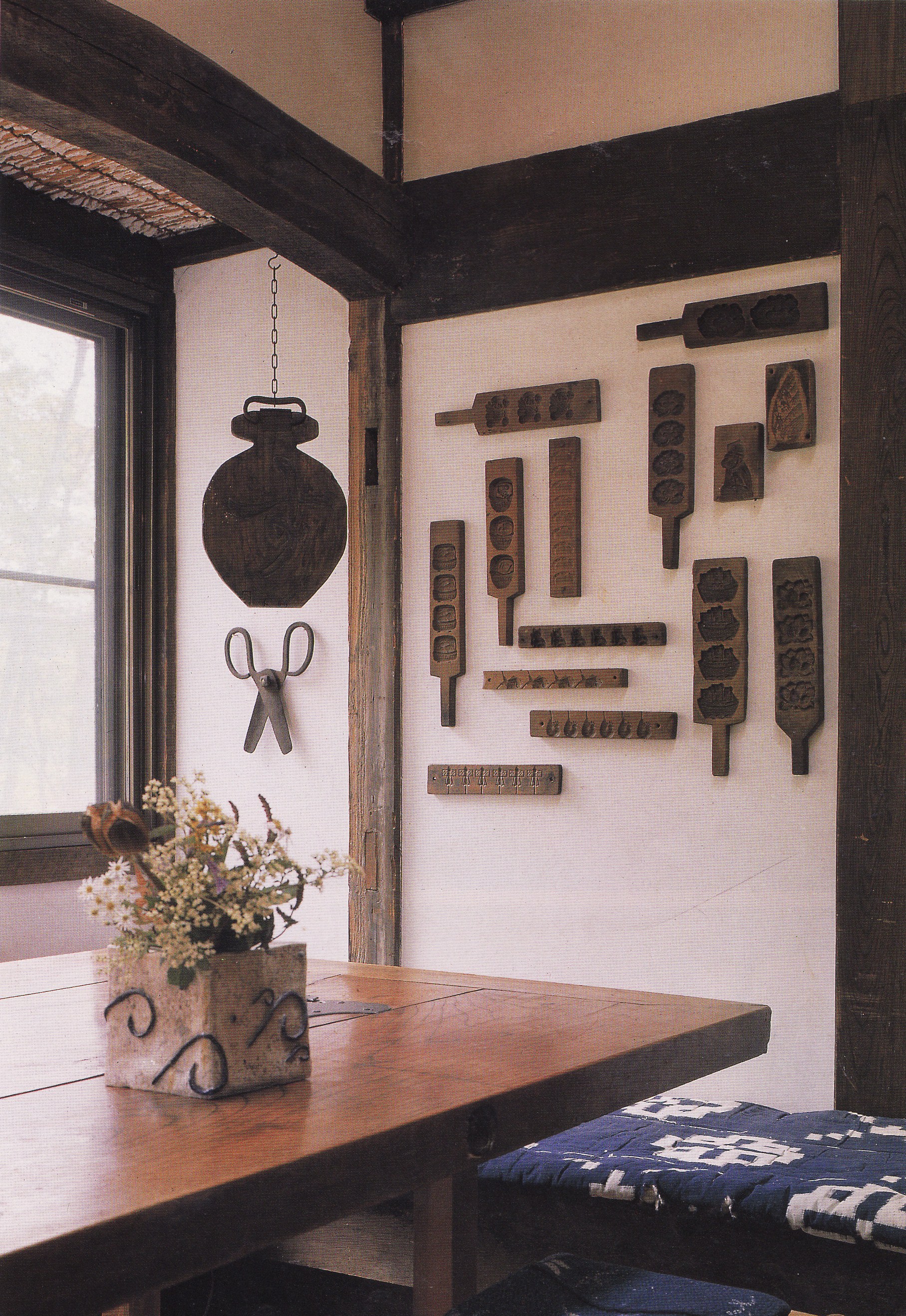 Today I went hunting for kashigata (sweets molds) at a few shrine sales and got lucky at Tomioka Hachimangu. A utilitarian but charming folk craft easily found and inexpensive to collect, most of the readily available molds are from the Showa era (1926-1989), and most are not particularly old at that. In use since at least the Edo period, the higashi (dry sweets) made by them are not what we would consider oishi (delicious), but they are very pretty. They were designed to last long periods of time and to suit a very different palate. Because they were sometimes left as funerary commemoratives, some have designs and writing to honor the departed. Other common designs include fruits and vegetables (great for kitchen display), fish and turtles (rarer and harder to find), and botanical motifs (plum, cherry, lotus, pine), as well as more unusual shapes (figures, kamon, etc).
Today I went hunting for kashigata (sweets molds) at a few shrine sales and got lucky at Tomioka Hachimangu. A utilitarian but charming folk craft easily found and inexpensive to collect, most of the readily available molds are from the Showa era (1926-1989), and most are not particularly old at that. In use since at least the Edo period, the higashi (dry sweets) made by them are not what we would consider oishi (delicious), but they are very pretty. They were designed to last long periods of time and to suit a very different palate. Because they were sometimes left as funerary commemoratives, some have designs and writing to honor the departed. Other common designs include fruits and vegetables (great for kitchen display), fish and turtles (rarer and harder to find), and botanical motifs (plum, cherry, lotus, pine), as well as more unusual shapes (figures, kamon, etc).
Today, a number of dealers had bins of medium quality molds in common botanical motifs.
This dealer had a few unusual ones, such as the fan in the lower right.
In this picture you can see a fish, most likely tai (sea bream) and a turtle. These are highly covetable motifs.
A friend displays her fish on a small easel, with the cover resting in front.
Amy Katoh’s Japan: The Art of Living has a great photo of a kashigata grouping hung on the wall in a more traditional Japanese style house.
 I have one older kashigata, in a stylized chrysanthemum pattern. I have been waiting, holding on to it, thinking I needed a group like that above to display it properly. Then I came across actress Kim Raver’s charming “undecorated” Bridgehampton home that she shares with her mom and family. Propped on the rustic brick fireplace is a single kashigata. Hard to see, but peer very closely at the mantlepiece…The fireplace is original to the 100+year-old house and where the first residents did their cooking.
I have one older kashigata, in a stylized chrysanthemum pattern. I have been waiting, holding on to it, thinking I needed a group like that above to display it properly. Then I came across actress Kim Raver’s charming “undecorated” Bridgehampton home that she shares with her mom and family. Propped on the rustic brick fireplace is a single kashigata. Hard to see, but peer very closely at the mantlepiece…The fireplace is original to the 100+year-old house and where the first residents did their cooking.
I can’t resist adding one more photo of this home. I always love mismatched chairs and tables in a dining space and these bentwood ones painted blue are so charming with the scrubbed pine and simple kilim. The key to this house is that it has been assembled over time by Raver’s mother. “She gathered things from her whole life and created an accessibility and warmth in every room,” says Raver. Go to In Style to see more pictures of this house and Raver’s very different West Coast home.
Sweets and candy molds seem popular right now and not limited to those made in Japan. Barry Dixon has this vintage candy mold in his current One Kings Lane sale, with no provenance information listed.
Eddie Ross tweeted about his newly purchased German cookie presses a few weeks ago. They feel very reminiscent of the Japanese molds. I wonder if there is any relation between them?
 For more on kashigata, pick up back-issue 50 of Daruma Magazine. They have a great article on them, with photos of rare examples and details on how the sweets are made.
For more on kashigata, pick up back-issue 50 of Daruma Magazine. They have a great article on them, with photos of rare examples and details on how the sweets are made.
Image Credits: 1. yukkimura, 2-4 & 7. me, 5. P. Huxtable, 6. Japan:The Art of Living photo credit Shin Kimura, 8-9. In Style Magazine November 2010 photo credit: David Mushegain, 10. One Kings Lane, 11. Eddie Ross, 12. Daruma Magazine









